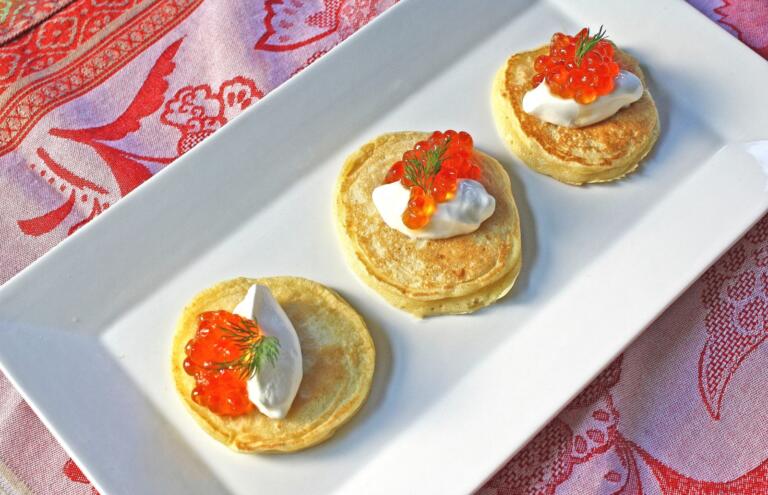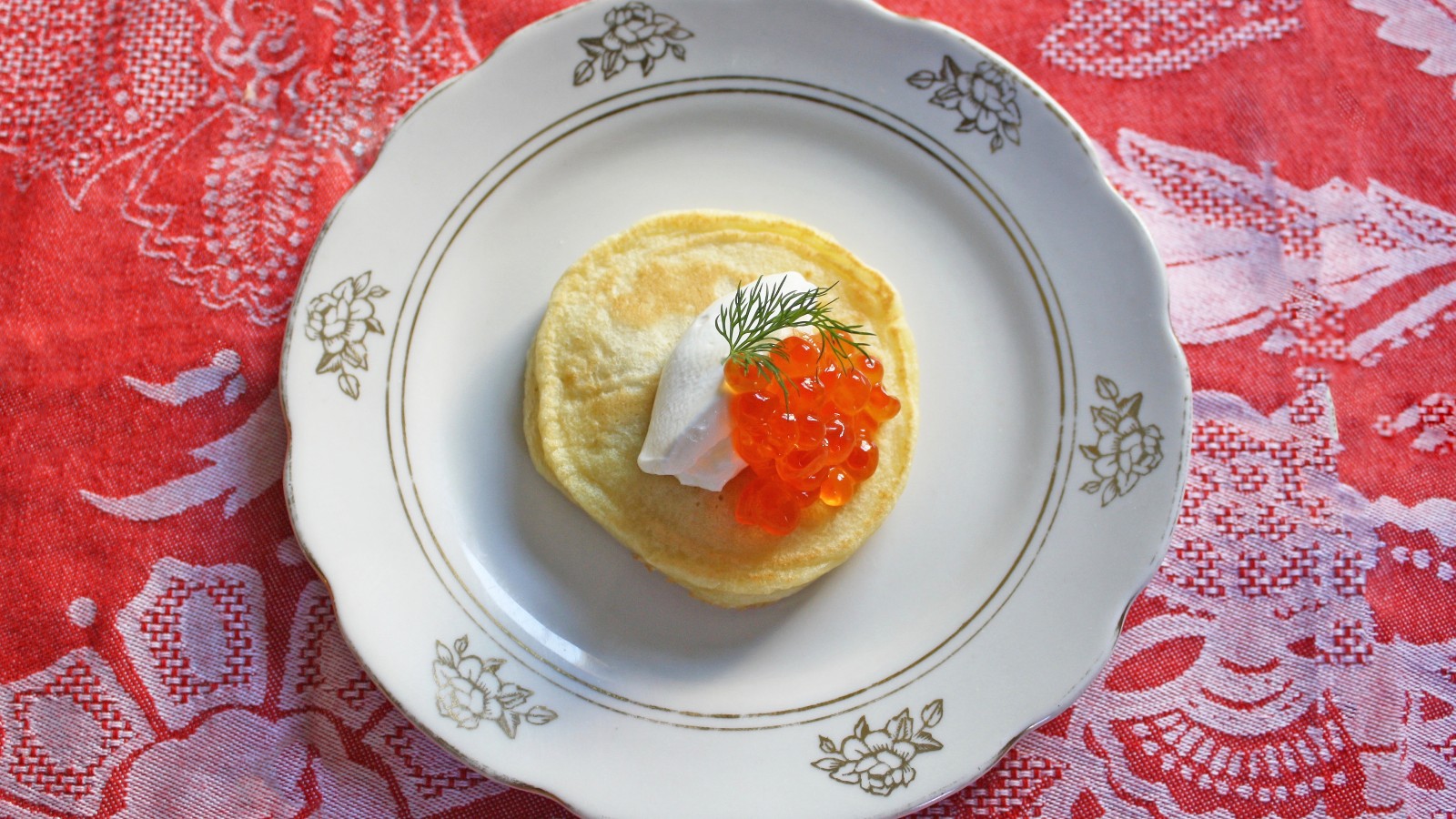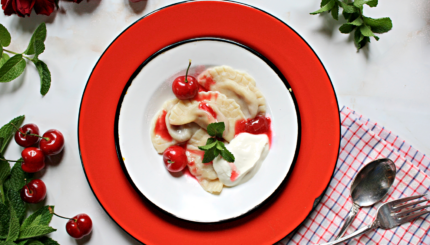According to the early East Slavs, little pancakes called blini in Russian were meant to resemble the sun. They were traditionally prepared at the end of winter, to mark the beginning of brighter days. It’s easy to see how this connection was made. These pillowy soft, golden rounds, often topped with shiny orbs of caviar or roe, can brighten even the darkest days of winter.
Blini are one of the most popular dishes in Russia and the former Soviet Union, and have become a staple at holiday parties and New Year’s gatherings around the world. Their buttery, simple taste is the perfect canvas for a range of toppings. Most commonly, you’ll see blini served with salmon or trout roe, caviar, or smoked fish, like lox. You’ll also find blini topped with a small dollop of smetana (an Eastern European sour cream-creme fraiche hybrid), creme fraiche, or sour cream. The richness of the cream balances the sharp saltiness of the fish. A garnish of fresh dill adds a pop of color and a hint of anise.
These pancakes are made with a yeasted dough. They are not to be confused with the thin, crepe-like pancakes used for blintzes, which are also sometimes called blini, or blinchikiin Russian. In this batter, the yeast combined with whipped egg whites make a light and airy pancake. Buckwheat flour is optional, but gives the pancakes a nutty earthiness.
These are a perfect appetizer but I see no objection to having them as a main course, or even for breakfast with sweet topping. They are well-known friends of champagne and cocktails, and whether they feed two or 20, they are inherently festive.
The Nosher celebrates the traditions and recipes that have brought Jews together for centuries. Donate today to keep The Nosher's stories and recipes accessible to all.

Russian Blinis
Tiny buckwheat pancakes to bring in brighter days.
- Total Time: 1 hour 30 minutes
- Yield: 20-24 small pancakes
Ingredients
- 1 cup milk
- 1 Tbsp sugar
- 1 tsp active dry yeast
- 2 large eggs, separated
- 2 Tbsp oil or melted butter
- 1 ½ cups all-purpose flour (or use ⅔ cup buckwheat flour + ½ cup all-purpose flour)
- ½ tsp salt
To serve (optional):
- lox and scrambled eggs
- salmon roe and creme fraiche, topped with fresh dill or parsley
Instructions
- To make the batter, heat the milk until just warm (between 90-110°F). Add sugar and yeast to the warm milk, and let it activate for 5 minutes.
- Separate the eggs, add the egg whites to a medium bowl, and whisk until thickened and stiff peaks form. Set aside.
- To a large bowl, add the 2 egg yolks, oil/butter, and the milk and yeast mixture.
- Sift the flour and salt together. Add the flour mixture to the egg yolk and milk mixture. Whisk together until smooth, about 30-60 seconds.
- Gently fold in the whipped egg whites until just combined; be careful not to over mix so as to retain the lightness from the whipped egg whites.
- Cover with a damp towel or plastic wrap, and place in a warm non-drafty place in the kitchen. Allow the mixture to rise for 45-60 minutes, or until bubbly and thickened.
- To make the blini, heat a nonstick skillet or griddle over medium heat (if your blinis brown too fast, reduce the heat as needed). Once hot, add a little oil or butter to the pan; I like to brush a thin amount of oil or melted butter onto the pan between each batch.
- For appetizer-sized blinis, add a heaping tablespoon of batter to the pan for each blini. For a more standard-sized pancake, use ¼ cup of batter per pancake. Once bubbles form on the top of the pancake, flip it and cook the other side for 20-30 more seconds. Transfer to a plate or sheet tray as you continue to work in batches.
- Serve warm or at room temperature with your favorite toppings.
- Prep Time: 1 hour 15 minutes
- Cook Time: 15 minutes
- Category: Appetizer
- Method: Stovetop
- Cuisine: Russian



